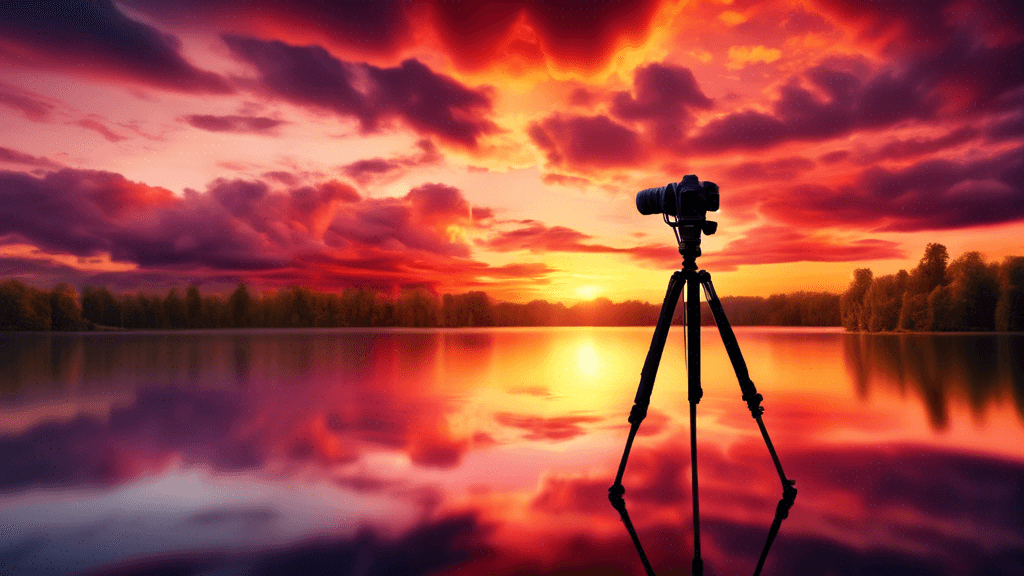
Capturing the Drama: Essentials of Skyscape Photography
Share
Introduction to Skyscape Photography
Have you ever gazed up at the sky and felt compelled to capture its vastness and beauty? Skyscape photography, a branch focusing on capturing the sky, clouds, and atmospheric events, is a profound visual journey. It's not just about snapping shots of a pretty sunset; it's about engaging with the environment and coalescing the terrestrial with the celestial.
Understanding the Sky as Your Canvas
The sky, with its ever-changing colors and patterns, presents a dynamic canvas for photographers. But what makes a skyscape photograph stand out? In its essence, skyscape photography is not merely shooting the sky as it is, but rather capturing the drama, emotions, and vastness expressed in the overhead spectacle. To paint the sky through your lens effectively, you must understand several key elements:
The Role of Light
Light is the fundamental element of all photography, and its role becomes even more pronounced in skyscape photography. The time of day significantly affects the mood and texture of your image. For instance:
- Golden Hour: The soft, diffused light at dawn and dusk emphasizes textures and colors, making it perfect for a warm, inviting skyscape.
- Blue Hour: This period provides a balanced, cool-toned light that enhances silhouettes and transitions smoothly from the drama of sunset to the peace of twilight.
- Daytime: Often overlooked, midday photography can delineate cloud formations and patterns starkly, creating dramatic effects especially in stormy weather.
Choosing the Right Equipment
To truly capture the essence of the sky, choosing the right gear is crucial. Here’s what you might consider:
- Camera: Any camera that allows manual control over settings like shutter speed, aperture, and ISO is suitable.
- Lenses: Wide-angle lenses are preferred for expansive, majestic views, while a telephoto lens can be used to focus on detailed cloud patterns or celestial events.
- Filters: Neutral density filters can help manage light, especially in bright conditions, and polarizing filters can enhance the vibrancy of the sky by reducing glare.
- Sturdy Tripod: Essential for keeping your camera stable during long exposures, especially in windy conditions or when capturing movement in clouds.
Composition Techniques
A powerful composition can transform a simple shot into a memorable story. Consider these strategies:
- Rule of Thirds: Positioning the horizon on the top or bottom third of your photo can help emphasize either the sky or the landscape.
- Leading Lines: Use natural or urban elements to draw the viewer’s eyes into the skyward drama.
- Frames: Trees, windows, arches – use these to frame your skyscape, adding depth and context to your composition.
Making the Most of Atmospheric Conditions
While clear blue skies have their charm, the real drama unfolds when weather conditions are dynamic. Capturing storms, for instance, requires not only patience and persistence but also an understanding of safety and preparedness. Timing, in this case, is often dictated by the pace of changing weather patterns, requiring photographers to be vigilant and ready.
One notable quote from Ansel Adams beautifully captures the essence of skyscape photography: A good photograph is knowing where to stand. This is peculiarly true for skyscape photography, where positioning and perspective can completely alter the visual narrative of the sky.
The Role of Post-Processing
Post-processing plays a pivotal role in enhancing skyscape images. Adjustments in contrast, brightness, and color saturation can help in accentuating the mood and bringing out hidden details within the clouds. Software like Adobe Lightroom and Photoshop offers tools to subtly but effectively transform a raw photograph into a vivid piece of art.
Sharing and Preserving Your Work
Ultimately, photography is about sharing your vision. Presenting your skyscape photography in online forums, exhibitions, and publications can not only bring recognition but also connect you to other photographers who share your passion. Moreover, consider using your skills for environmental awareness by showcasing the beauty of the natural world and advocating for its preservation.
Conclusion
Skyscape photography merges art, science, and environmental consciousness in a unique blend that challenges both the photographer's skill and creativity. As you look up to the sky with your camera in hand, remember that you are not just capturing a moment but narrating the grandeur of the universe as seen from our humble vantage point on Earth.
Ready to capture the vast drama unfolding above us? Gather your equipment, embrace patience, and let the skies tell their story through your lens.





